Wildlife conservationists in Florida stumbled across an enormous species of turtle that looks like it crawled out of a monster movie.
Biologists with the Florida Fish and Wildlife Conservation Commission captured three Suwannee alligator snapping turtles last week, including one that weighed 100 pounds.
The massive reptiles, known formally as Macrochelys suwanniensis, are a new species, according to a post on the FWC Facebook page.
The 100-pound male and a 46-pound female were found in a hoop net trap in the New River, north of Gainesville, along with another 64-pound male found in a trap. nearby.
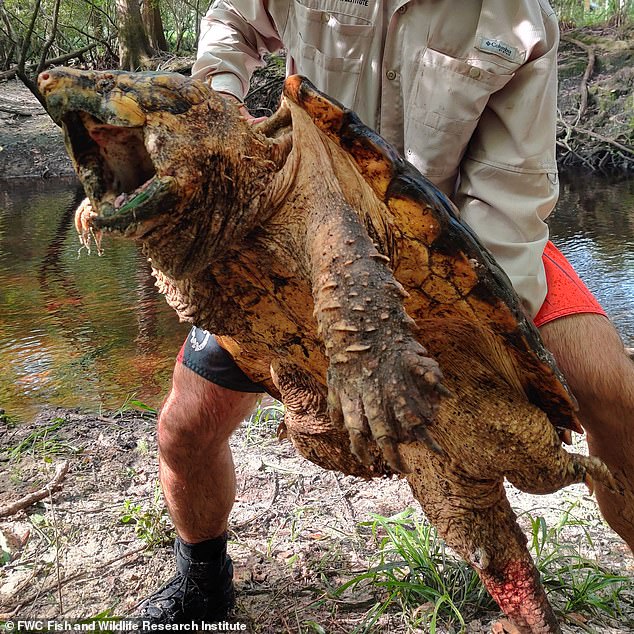
A 100-pound male Suwannee alligator snapping turtle being returned its habitat. Conservationists with the Florida Fish and Wildlife Conservation Commission found the reptile, along with two others, in hoop net traps laid in the New River, north of Gainesville
The commission has been studying these prehistoric-looking creatures since 2014.
Researchers estimate that the trio is anywhere from 40 and 80 years old.
Once the three turtles had their photograph taken and vital stats recorded, they were released back into the river.
‘The New River is a blackwater stream with low biological productivity, so finding a large turtle in such a small stream is unusual,’ the agency said.
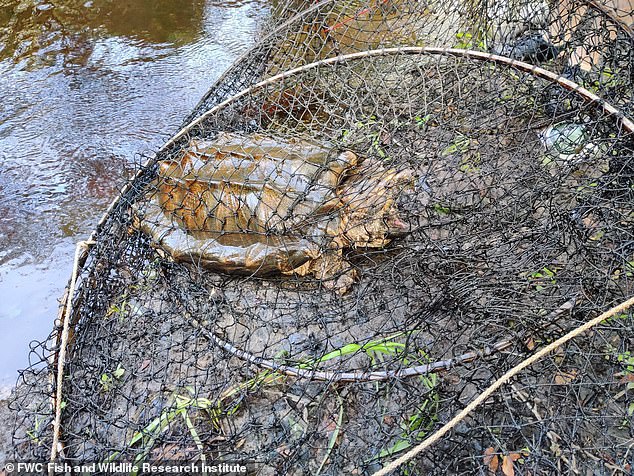
A 64-pound male Suwannee alligator snapping turtle being freed from a net. The massive reptiles are a new species, first reported in 2014
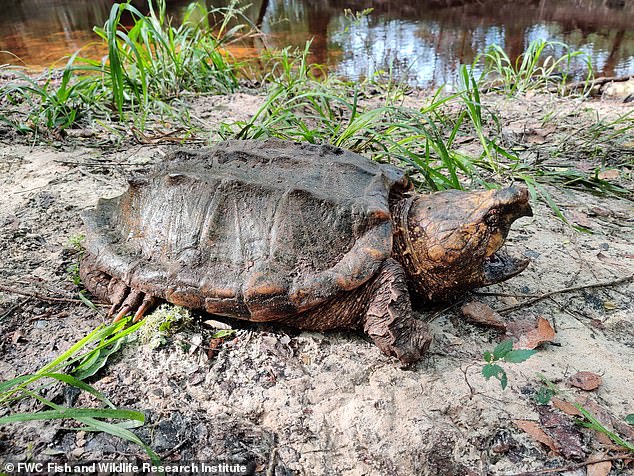
A 46-pound female Suwannee alligator snapping turtle. Finding a large turtle in such a small stream is unusual, the commission said
The FWC has been collaborating with researchers in Florida and Georgia to study the population size and distribution of Suwannee alligator snapping turtles, which is indigenous to the area.
Previously, it was believed there was only one living species of alligator snapping turtle.
A third species, the Apalachicola snapping turtle, has been proposed but is not widely recognized.
Alligator snapping turtles are the largest freshwater turtles in North America.
Despite its name, they’re not closely related to the common snapping turtle, which is in a different genus.
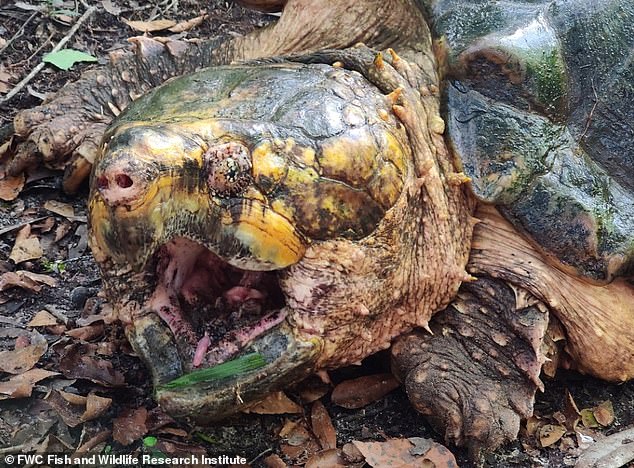
Despite their names, the alligator snapping turtle is not closely related to the common snapping turtle, which is in a different genus. With a beaklike jaw, spiked shell and scaly, thick tail, it’s been called ‘the dinosaur of the turtle world’
It’s name is derived from the ridges on its shell that resemble the rough skin of an alligator.
With a beaklike jaw, spiked shell and scaly, thick tail, it’s also been dubbed ‘the dinosaur of the turtle world.’
They spend most of their lives in rivers and canals, except when the female crawls ashore, and can stay underwater for 40 to 50 before surfacing for air.
Most live to about 70, though there have been reports of alligator snapping turtles living to 100.
Males alligator snapping turtles weigh about 175 pounds, according to National Geographic, although they can surpass 200 pounds.
Females are much smaller, usually weighing under 50lbs.
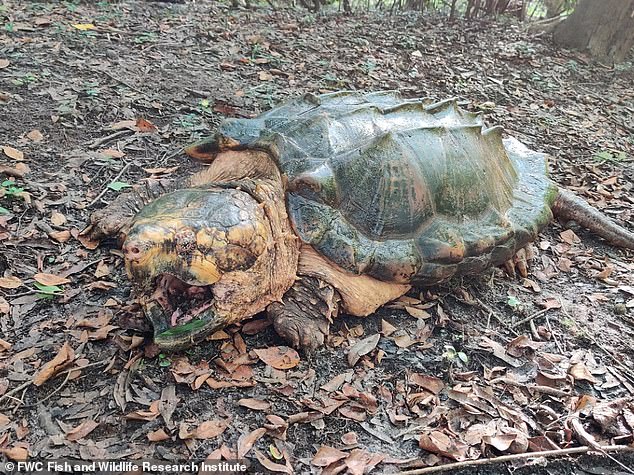
Scientists are particularly concerned about the Suwannee because of its limited habitat. ‘All it has is this river and it has nowhere else to go.’
Beyond their bizarre appearance, alligator snapping turtles have a truly unique hunting technique. They uses a bright pink chunk of flesh on their tongues like a lure, drawing in curious fish and frogs.
Once its prey gets in range, the previously motionless reptile snaps its jaw shut.
With their size and natural defenses, alligator snapping turtles have no natural predators except for humans, who hunt them for their meat and shells.
The turtles’ numbers have declined precipitously in recent years due to unregulated harvesting and habitat loss.
Scientists are particularly concerned about the Suwannee because of its limited habitat.
‘If something catastrophic were to occur, such as a chemical spill or something that affects the entire river, it could potentially devastate this species,’ Travis Thomas, a FWC scientist said in 2014. ‘All it has is this river and it has nowhere else to go.’

